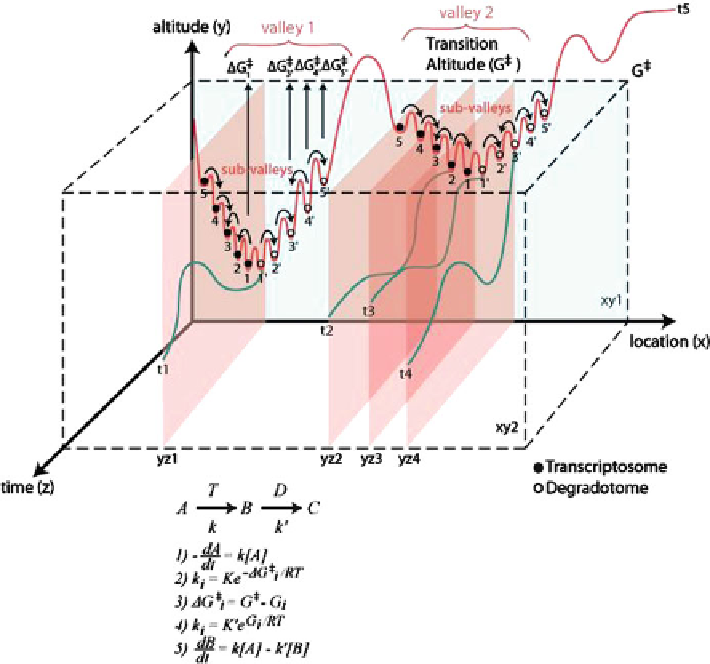Biology Reference
In-Depth Information
Fig. 12.32 The time-dependent Gibbs free energy landscape (TGFEL) model as applied to the
whole-cell metabolism of genome-wide RNA molecules. A
¼
precursor of RNA; B
¼
RNA;
C
¼
ribonucleotides. k
i
¼
the rate constant for the ith quantum state of an enzyme, i.e., T or D;
D
G
i
{
¼
the Gibbs free energy of activation for the ith quantum state of an enzyme; G
i
¼
the ith
ground-state Gibbs free energy level of an enzyme; R
¼
gas constant; T
¼
temperature; K,
K
0
¼
proportionality constants;
1
the rate law of RNA synthesis;
2
the rate constant as the
exponential function of the ith Gibbs free energy of activation;
3
the ith Gibbs free energy of
activation as the function of the ith ground-state Gibbs free energy level;
4
the ith rate constant as
the exponential function of the ith ground-state Gibbs free energy level, and
5
the rate of change in
TL, i.e., dTL/dt, as the balance between the transcription rate and the transcript degradation rate
are postulated to occupy the same valley. Thus, Valley 1 may be occupied
mostly by the glycolysis RNA molecules and Valley two mostly by protein
glycosylation RNA molecules, for example. RNA molecules appear to be able
to “cross over” from one valley to another just as they can cross over from one
sub-valley to another within a valley (see the curved arrows).
5. The transcriptosomes and their conjugate degradosomes are thought to be
coupled mostly through
trans
-mechanisms,
i.e.,
through sharing common

